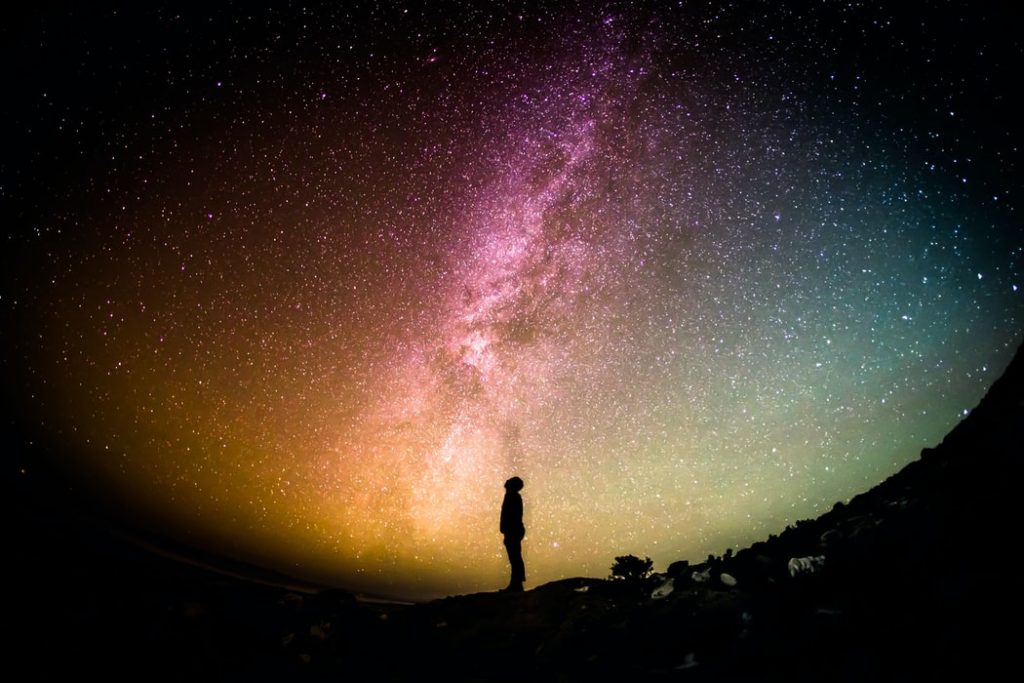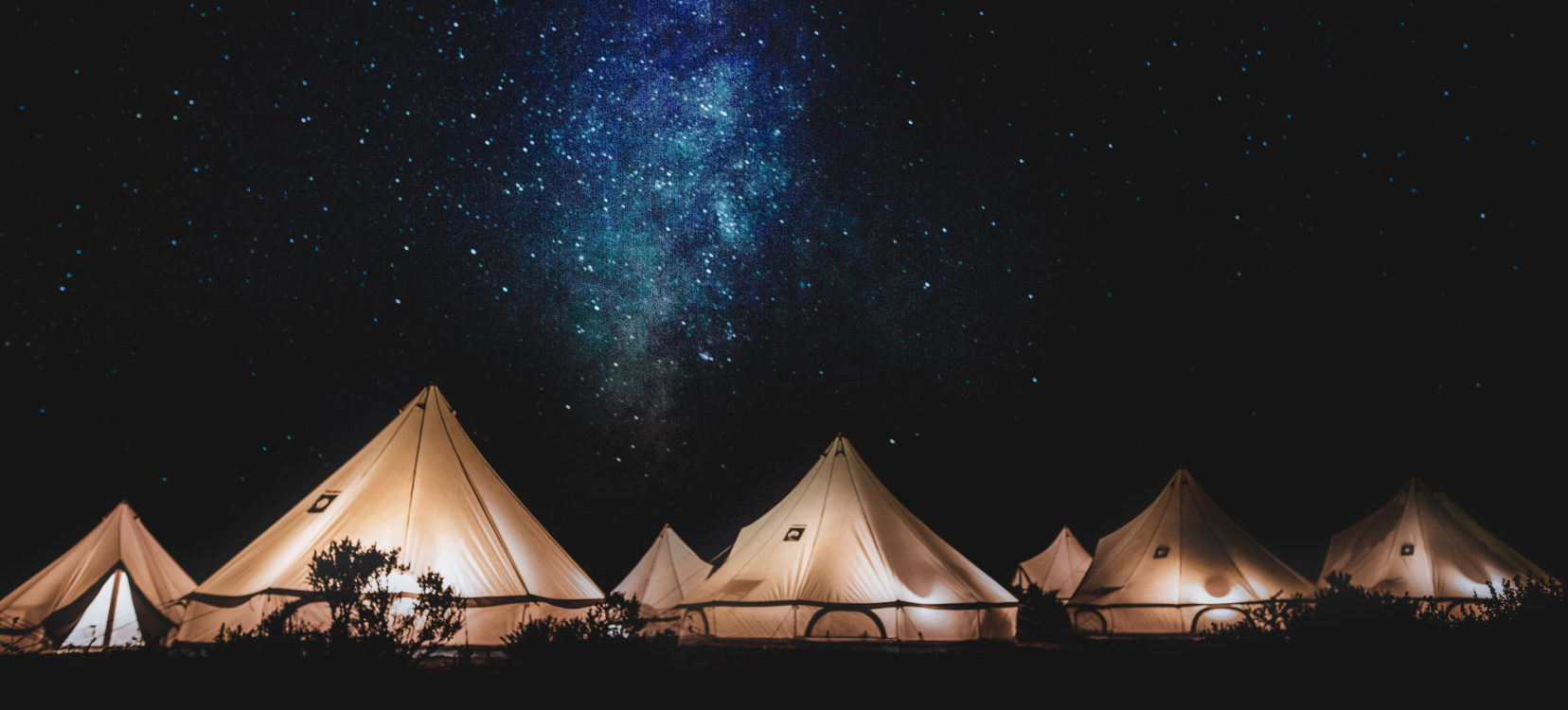Stargazing in a Stargazer
Camping in the great outdoors offers so many new experiences including stargazing! One that can’t be “overlooked” is the chance to explore all the wonders of the night sky. Here are some tips to consider when looking to enhance your nighttime camping adventure.
First, the Tent!
The Stargazer Pro, part of Stout Tent’s Pro Series is perfect for letting the moonlight in! Featuring a 360 degree transparent roof, this Pro Series tent is hardier, heavier, and better suited for long-term setups. Stargazing in a Stargazer is perfect for the aspiring astronomer who needs a base for viewing and chartering for multiple nights.

Best Locations
Outside of cloudy skies, the biggest obstacle when finding a good place to view the stars is light pollution. You typically don’t have to drive too far to find a good place, but if you live near near a major city (or the parking lot of a shopping mall!) you may have to plan to drive a little way out. Some of the best skies in the US for sky viewing are quite far from civilization. Places like Glacier National Park in Montana or Denali National Park in Alaska feature some of the clearest skies in the world, but there are some remarkably good places that aren’t too far from suburbia. These places include:
- Cherry Springs State Park, PA
- Big Pine Key, FL
- Bryce Canyon National Park, UT
- Rocky Mountain National Park, CO
- Finger Lakes, NY
- Sleeping Bear Dunes, MI
- Lake Tahoe, CA
- Burke Lake Park, VA
- Steens Mountain, OR
- Osage Hills State Park, OK

When is the best time of year?
If the skies seem like they’re clearer during the colder months you might be right. When the earth tilts away from the sun, you’ll get less “interference” from its light, but a bigger factor is the lack of heavy precipitation in frigid weather. During a “cold snap”, you might find a higher chance of consecutive clear nights. Bring some hot chocolate, throw on a jacket, and light a campfire!
Telescopes
Naked eye view can be exciting enough, especially if you have a comfortable place to lie down. If you decide to take it to the next level with a telescope, there are many options depending on the type of viewing you’re planning. Here are some great suggestions worth checking out:
Orion 10033 FunScope TableTop – Perfect for viewing the moon and its craters, this tabletop telescope is great for viewing the sky from their own backyard camping area. Affordable and with very little setup, this one is great for kids!
Celestron 70mm Travel Scope – Touted as quick and easy to set up, this telescope (which comes with a tripod and backpack) is great for beginners. Also great for wildlife viewing during the day!
Orion 09007 SpaceProbe – Weighing at nearly 25 pounds, this scope will bring the skies clearer and perfect for spotting galaxies, nebulas, and star clusters.
Celestron NexStar 130SLT – Enjoy a personalized tour of the night sky with this computerized star-locating telescope. Program what you what to see and the scope will locate it AND track it!
Night Sky Events
Now that you have your Stargazer Pro bell tent, your viewing spot and your telescope, what should you be looking for? Besides the endless number of stars, planets, and constellations, if you’re looking for some spectacular shows, mark your calendars for these astrological events in 2021:
April 14-30 Lyrid Meteor Shower – This is the oldest recorded meteor shower and will peak around the 21st and 22nd. Get up early for this one (before dawn) and prepare to see up to 20 meteors streak across the sky!
May 26: Lunar Eclipse and Supermoon – The supermoon occurs when the moon’s orbit is closest to the earth, making it the largest it will be in the sky. On the SAME night, much of the western United States, Canada, and Mexico will be treated to a lunar eclipse. What luck!
August 11-12: Perseid Meteor Shower – Debris created by the massive Swift-Tuttle comet catches the earth’s atmosphere in the showiest display of the year. Sky-watchers can expect to see 50-200 meteors on a clear night!
November 16-17: Leonid Meteor Shower – With a max of 15 meteors per hour, this might not be the biggest ‘show’ of the year, but it certainly is one of the flashiest. The trick here is to lie on your back and let your eyes adjust for 30 minutes. This will maximize your peripheral vision.
Late September-Early December: The Venus Show – Venus’ location in the fall sky is truly spectacular. The planet will appear in the late evening but then shine brightest during twilight. The show will be best viewed on nights when the moon chases it across the sky.

Photo: Steve Gonyaw
Resources
SkyView App® – Simply point your phone or iPad in the direction you’re viewing and the app shows you what you’re looking at! From planets and stars, to constellations, and even satellites, this app is perfect for identifying nearly everything visible to the eye – and more! Available on the Apple and Google Play stores.
Constellation chart – Like the seafaring explorers of the past, constellations are a great way to navigate the night sky. You might benefit from a little research ahead of time. And this interactive chart is a great place to start.
NASA – Go to the experts! NASA provides lots of information about what you may see in the sky on a given night and can help you plan to see satellite orbital flyovers!
Sky Viewing Journal – If you’re starting a hobby, keeping a journal to tracking with you see in a given night is almost a requirement! This journal provides you with charts and other information to document each experience!






